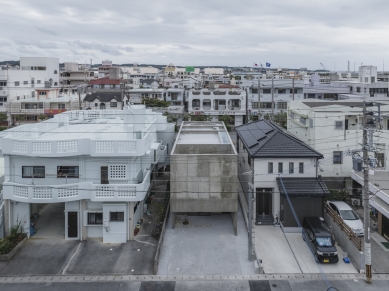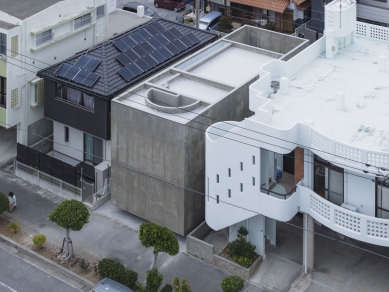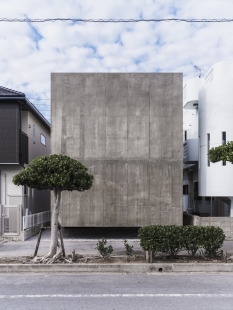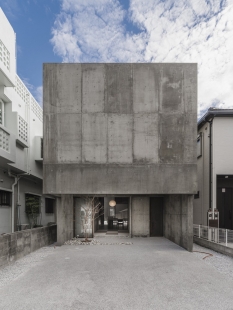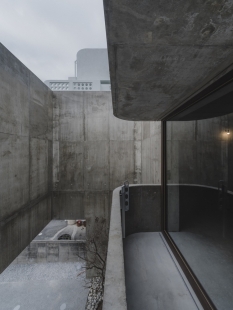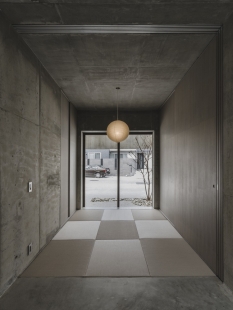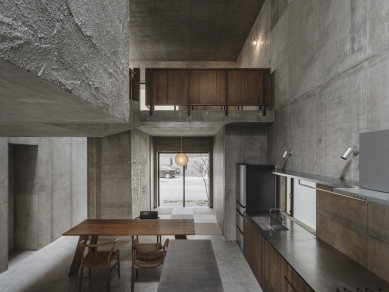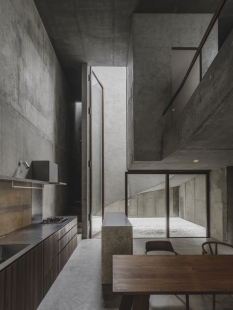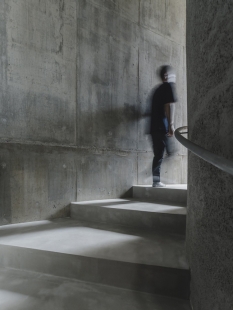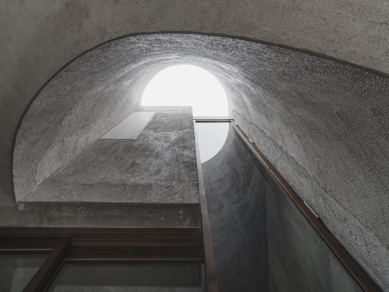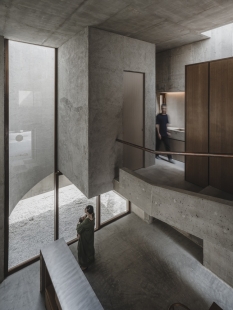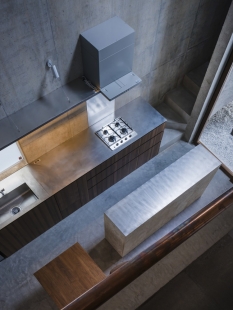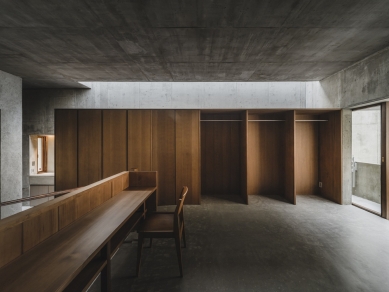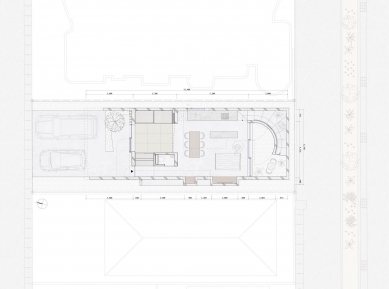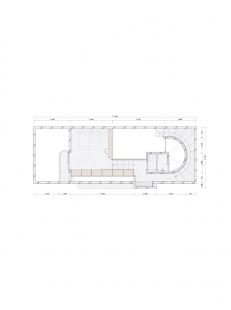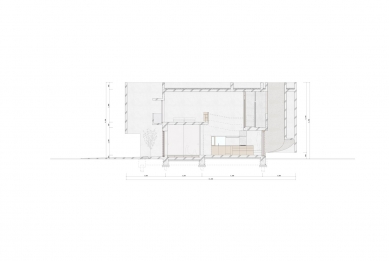
House in Nishizaki

The Nishizaki House is a residence for a family of three. The home is located on reclaimed land in a newly developed residential area south of Okinawa's main island.
The surrounding area consists of a mix of residential areas, commercial facilities, industrial parks, schools, sports parks, fishing ports, and other structures of various uses and scales. North of the home, a residential area is zoned, while a commercial area stretches south across a large highway. As a result, the north side of the home is relatively quiet throughout the day, but the south can be noisy at times due to heavy traffic. East and west of the home are neighboring homes that are close in proximity. Developed areas in Okinawa are frequently densely built, and the number of vacant houses is increasing.
While Okinawa has a unique and majestic natural environment, urban areas have this chaotic, lively landscape. In addition, typhoons occur throughout the year, and disasters must be prepared for. In such an environment, the challenge was to maintain distance from the city's chaos and to ensure a comfortable indoor environment. The client's primary request was for their own urban oasis. They wanted to live without a line of sight from the surrounding area and allow as much natural light and air flow as possible. The building has a rectangular design to match the site.
Public rooms are situated on the first floor, where they are more connected to the surrounding area, and private rooms, such as bedrooms and bathrooms, are on the second floor. The courtyard and skylight are aligned with north-south to increase natural light and airflow. The northern courtyard, which faces into the residential area, functions as a buffer zone. It provides the residents with relief from the dense neighborhood while still allowing a gradual window to the outside.
The connected living area and tatami room, which serves as a parlor, create a sense of spaciousness within the home (maximizes line of sight in the interior). In contrast, the southern courtyard provides a solid buffer zone between the town and the staircase room. The increased buffer enhances the peace of the courtyard and living room. The staircase is also intended to be a dimly lit room, so it is slightly roomier than a normal staircase to accommodate chairs and other items.
By creating a strong and a weak buffer zone with the city and allowing space for natural light and airflow, we believe we have used multiple dimensions to accommodate the activities of daily life in relative peace while living in a densely populated residential area. In addition, most of the furniture and fittings were made in my own workshop—a proof of concept for expanding the possibilities of local craftsmanship and reducing dependency on imported materials.
The surrounding area consists of a mix of residential areas, commercial facilities, industrial parks, schools, sports parks, fishing ports, and other structures of various uses and scales. North of the home, a residential area is zoned, while a commercial area stretches south across a large highway. As a result, the north side of the home is relatively quiet throughout the day, but the south can be noisy at times due to heavy traffic. East and west of the home are neighboring homes that are close in proximity. Developed areas in Okinawa are frequently densely built, and the number of vacant houses is increasing.
While Okinawa has a unique and majestic natural environment, urban areas have this chaotic, lively landscape. In addition, typhoons occur throughout the year, and disasters must be prepared for. In such an environment, the challenge was to maintain distance from the city's chaos and to ensure a comfortable indoor environment. The client's primary request was for their own urban oasis. They wanted to live without a line of sight from the surrounding area and allow as much natural light and air flow as possible. The building has a rectangular design to match the site.
Public rooms are situated on the first floor, where they are more connected to the surrounding area, and private rooms, such as bedrooms and bathrooms, are on the second floor. The courtyard and skylight are aligned with north-south to increase natural light and airflow. The northern courtyard, which faces into the residential area, functions as a buffer zone. It provides the residents with relief from the dense neighborhood while still allowing a gradual window to the outside.
The connected living area and tatami room, which serves as a parlor, create a sense of spaciousness within the home (maximizes line of sight in the interior). In contrast, the southern courtyard provides a solid buffer zone between the town and the staircase room. The increased buffer enhances the peace of the courtyard and living room. The staircase is also intended to be a dimly lit room, so it is slightly roomier than a normal staircase to accommodate chairs and other items.
By creating a strong and a weak buffer zone with the city and allowing space for natural light and airflow, we believe we have used multiple dimensions to accommodate the activities of daily life in relative peace while living in a densely populated residential area. In addition, most of the furniture and fittings were made in my own workshop—a proof of concept for expanding the possibilities of local craftsmanship and reducing dependency on imported materials.
Studio Cochi Architects
0 comments
add comment


